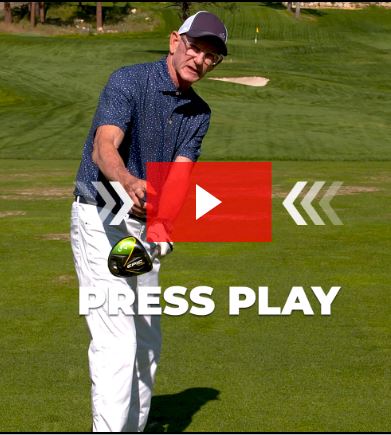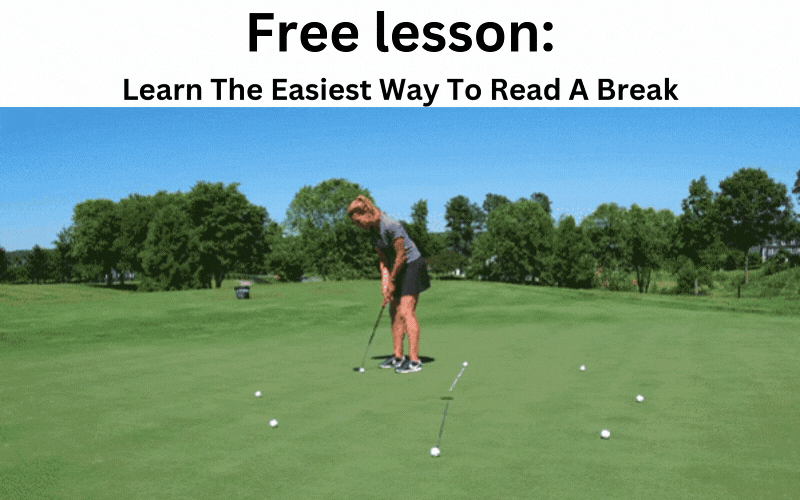Understanding and Diagnosing the Problem:
Solving a slice begins with understanding why it occurs in the first place. Hank Haney, with his extensive coaching experience, is known for his emphasis on diagnosing swing faults. He often helps students pinpoint the causes of their slice, which typically involves factors such as the grip, swing path, and clubface orientation at impact.
For instance, he explains the 'path and face relationship,' which is the principle that the golf ball starts where the clubface is pointing at impact and curves away from the path. Understanding this principle is vital as it helps a golfer self-diagnose their shots.
The course also covers various methods for self-assessment, like observing the pattern of divots or using video recording tools to analyze the swing.
Grip Adjustment:
The grip is the foundation of a sound golf swing. It's your only physical connection to the club, and a faulty grip can lead to various issues, including a slice.
Haney's course covers the fundamentals of a good golf grip, detailing how to hold the club in the fingers instead of the palm and the importance of hand positioning.
It's worth noting that Haney distinguishes between the 'weak,' 'neutral,' and 'strong' grip styles. A weak grip often leads to an open clubface at impact, causing the ball to start right and slice further right. A neutral or slightly strong grip can aid in squaring the clubface, which is crucial in combating a slice.
Swing Path and Plane Correction:
One common cause of a slice is an 'outside-in' swing path, meaning the club moves from outside the target line to inside during the downswing.
In his course, Haney introduces drills and exercises that foster an inside-out swing path, which is typically associated with a draw or straight shot rather than a slice.
The swing plane is another covered in Haney's course. An upright or steep swing plane often encourages an outside-in swing path, whereas a flatter plane can facilitate an inside-out path.
Haney presents drills involving tools like alignment sticks or training aids to illustrate the correct swing plane.
Clubface Control:
The orientation of the clubface at the moment of impact is crucial in determining the initial direction of the golf ball.
Haney discusses the role of the hands and wrists in clubface control. The course includes drills designed to improve the feel for the clubface throughout the swing, such as hitting shots with a deliberately closed or open clubface to increase awareness.
Moreover, Haney delves into the concept of 'release,' where the clubface rotates through impact. This rotation is vital for squaring the clubface, and Haney likely provides exercises to help golfers achieve a proper and timely release.
Proper Body Alignment and Posture:
Body alignment and posture form the basis of a good golf swing. Haney's course features detailed instructions on how to align your feet, hips, and shoulders parallel to the target line.
It also discusses how to maintain a balanced and athletic posture throughout the swing, emphasizing the importance of spine angle and knee flex.
Proper alignment and posture can not only contribute to more consistent shots but also help prevent injuries. As part of this section, Haney shares exercises to improve posture and alignment, such as the "posture drill" where you practice setting up to the ball without a club, focusing solely on achieving the correct stance.
Mental Approach and Strategy:
Golf is as much a mental game as it is physical. Haney's course includes lessons on developing a strong mental game. This could involve tips on maintaining concentration throughout a round, methods for handling pressure, and techniques for managing frustration when shots don't go as planned.
Course management strategies are also a key part of the mental game. Haney discusses when it's better to take a risk and when it's smarter to play it safe, considering factors like wind direction, hazards, and your current state of play.
Building a strategic approach to golf can significantly improve your performance on the course.
Drills and Practice Routines:
The last but certainly not least important part of any golf instruction is the drills and practice routines. Here, Haney provides a variety of drills designed to reinforce the techniques being taught.
For instance, there might be grip drills where you practice setting up the grip without a club, focusing on the positioning of the fingers and hands.
Swing path drills could involve practicing the swing motion without a ball, or with obstacles set up to discourage an outside-in path. Haney recommends certain training aids to assist with these drills.
Practice routines are another vital component of improvement. Haney's course provides a structured routine that golfers can follow, including a mix of drills and practice games, as well as advice on how to effectively divide practice time between driving, iron play, short game, and putting.
In conclusion, while the specifics of Hank Haney's "1 Shot Slice Fix" course have helped me improve my game, I can assure you that his well-known philosophies on golf instruction and the fundamentals of the game suggest that the course covers every area of getting rid of your slice in great detail.
As with any golf instruction, the key to improvement is not just understanding the concepts but putting in the time and effort to practice and integrate them into your game.
Please watch the video below to learn how you can get rid of that dreaded slice in minutes.
It truly isn't as hard as you think.

